Wilson Burn 100S Countervail Racquet Review
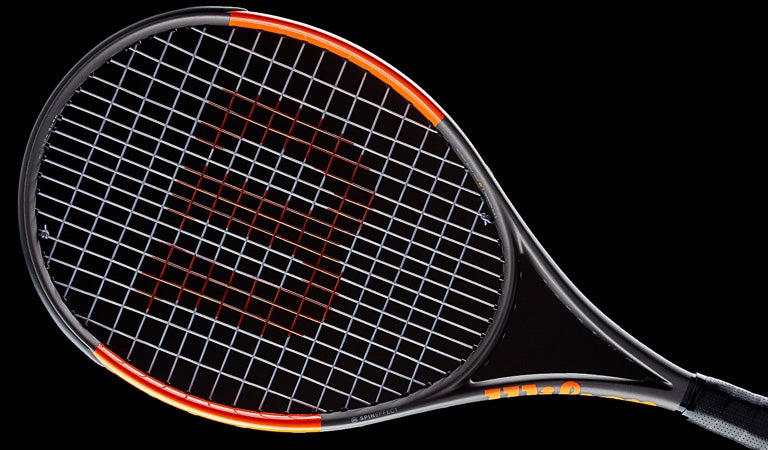
Upsides
- Power
- Spin
- Improved feel
- Easy to hit with depth
Downsides
- Some complaints of frame stiffness
Summary
Players looking to burn through their competition should take the Wilson Burn 100S Countervail to their next match. Wilson has updated the Burn series with new technology and a sleek new look. The frame has added Countervail material, which, Wilson claims, softens the effects of ball impact and counters muscle fatigue. The racquet still sports some older technologies, including the X2 shaft for better leverage on two-handed backhands and Parallel Drilling for a consistent, forgiving stringbed response. Spin Effect technology is present with the extremely open 18x16 stringbed pattern.
The Tennis Warehouse playtesters quickly noticed a difference in feel compared to the previous model. This update provides a softer, more comfortable ride, although several playtesters noted that it still plays on the stiffer side. The playtesters were able to hit their groundstrokes with power and depth, and the spin they generated allowed them to drop the ball in front of the baseline or pull their opponents off the court with a sharp angle. Up at net, the playtesters appreciated the solid response, but there were times when they would have liked a little more maneuverability, especially when they were hitting reflex volleys. The playtesters found plenty of spin and power on their serves, which allowed them to hit a variety of serves successfully. Returns seemed to be where the playtesters had the most problems, as they all needed to make some small adjustments to be effective and consistent. Overall, aggressive players looking to add power and spin to their game should check out what the Wilson Burn 100S Countervail has to offer.
Wilson Burn 100S Countervail Racquet Scores
| Power | 85 |
| Control | 79 |
| Maneuverability | 82 |
| Stability | 81 |
| Comfort | 81 |
| Touch/Feel | 83 |
| Serves | 82 |
| Groundstrokes | 84 |
| Returns | 82 |
| Slice | 81 |
| Topspin | 86 |
| Volleys | 82 |
| Overall | 82 |
Groundstrokes - Score: 84
The power of the Burn 100S Countervail made it easy for the playtesters to hit deep groundstrokes. Brittany was excited to be on this playtest for a couple of reasons. She started, "Firstly, this was my first playtest back after a significant injury (broken ankle). Secondly, I enjoyed the previous version of this racquet, but I felt like there was room for improvement. I wasn't disappointed when I hit the Burn 100S Countervail from the baseline. Right away, I noticed easy power and depth. My shots were landing deep in the court with little effort. When I did miss I was missing long, which I believe was due to the launch angle when I tried to flatten out my stroke. However, the biggest improvement was the feel. The Burn 100S Countervail was crisp, but it wasn't stiff or uncomfortable. My slices were solid. The racquet had enough weight for me to really cut the ball, and the ball really stayed low to the ground."
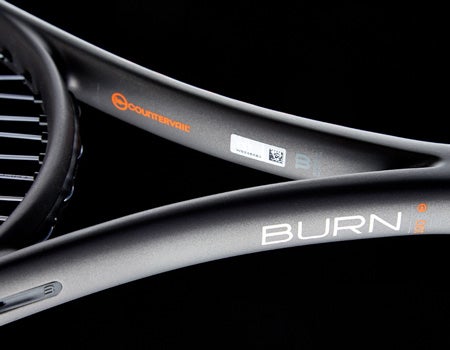
"The most noticeable difference between this racquet and the previous model it replaces was the feel," continued Jason. "With Countervail, the Burn 100S felt much softer and more muted, but after each hit I could feel the effects of that high stiffness rating. As far as performance goes, it's all about that power and spin. There were times when I thought my shot was definitely going long, but it somehow dropped in at the last millisecond. The launch angle was higher than it is with a traditional racquet, so there was a slight adjustment period for me, although it was not nearly as extreme as with the Steam 99S. Something's got to give with all that power and spin, and for me it was control. I was hitting more winners, but I was also hitting more errors with this racquet."
Tiffani was also on the playtest of both the Burn 100S and the 100 Countervail. She compared, "The Burn 100S Countervail was a blast to hit with from the baseline. The sweetspot felt generous, and the Spin Effect technology offered spin in manageable doses. I could still play flatter shots, but I could also tap into the spin and use it to my benefit. I loved to hit short backhand cross court shots with this racquet. I could hit ridiculous angles, and I admittedly got carried away at times because it was just so much fun. The racquet also had quite a bit of free power, and I could use that to help me dig myself out of defensive situations. This racquet had a little more power and spin than the non-spin version of the Burn 100 Countervail. I really enjoyed playing with both, and if I were playing well I would probably opt for the Burn 100S. When I wasn't quite on my game I had more success with the Burn 100. It was easier to control since I play a flatter game style. My only real issue with the Burn 100S Countervail the some stiffness. I enjoyed the feel that the Countervail technology provided, but after prolonged use my wrist was a bit sore."
Mark did a side by side comparison of the new and old model. He said, "I brought this new version of the Wilson Burn 100S to the court along with the prior model to get a sense of their similarities and differences. From the first contact (a forehand) I sensed that the layup of graphite for the newer Burn 100S was more forgiving and that the new Countervail Technology was in full effect. I was gaining confidence with it from the baseline within 15 minutes. My overall consistency from the back court was good with this new offering from Wilson, and I was hitting my targets with an effective level of pace and spin on the ball. The challenge for me was to keep the ball height over the net where I wanted it. The 18x16 string pattern made access to spin very easy, but the upward angle the ball traveled off the stringbed was a little unpredictable at times."
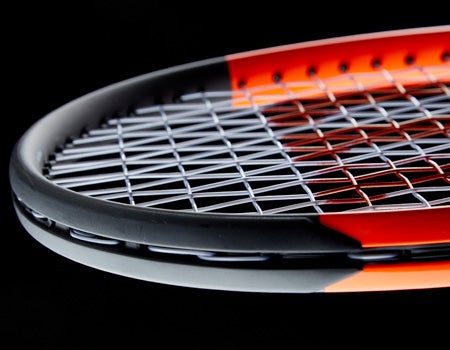
Volleys - Score: 82
The TW playtesters had an easy time putting away their volleys thanks to the power and stability that the Burn 100S Countervail offered. Mark raved, "With the Burn 100S' combination of an 11.5 oz strung weight and mid-320 swingweight, it didn't take much time for me to get comfortable at net. I was very effective with this racquet anywhere inside the service court, and hitting volleys was my favorite part of the playtest."
Tiffani also enjoyed volleying with the Burn 100S Countervail, saying, "I was pretty pleased when I was at the net. The sweetspot felt generous once again, and there was good put-away power. I felt like it was just up to me to get the racquet on the ball."
"I enjoyed finishing points with a solid punch volley up at net," added Brittany. "While the Burn 100S Countervail isn't the most maneuverable for reflex volleys, I did enjoy the stability that it offered when I was volleying any ball back. The improved feel made me more effective on my touch and angle volleys, and I had the ability to hit a variety of volleys."
Jason had his ups and downs with this racquet at net. He explained, "I found this 100S to be slightly more sluggish than the Burn 100, but there was a ton of power to put easy volleys and overheads away."
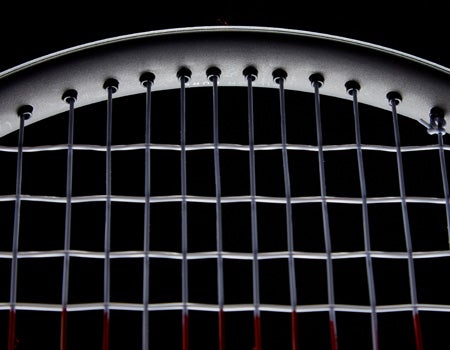
Serves - Score: 82
Like on their groundstrokes, the playtesters were impressed with the Burn 100S Countervail's power and spin potential on their serves. Jason really liked serving with this racquet. He praised, "The Burn 100S Countervail swung easily through contact and allowed me to serve with lots of power and spin. Because I could kind of let the racquet do the work for me once I got it in motion, I was serving at a higher percentage than I was with the regular Burn 100. I found the most success on the ad side, slicing my serve down the T and fading it away from my opponent."
"I could hit a variety of serves with the Burn 100S Countervail," Brittany said. "I was most effective serving out wide on the deuce side. I could really pull my opponent off the court and win some easy points to start off my service game. Even though it's a spin friendly racquet, I was able to flatten out my first serve and hit some serves in the low 90 mph range. I also felt comfortable hitting second serves. There was plenty of spin to bring the ball down into the court and kick it up out of my opponent's strike zone."
Mark had nothing but positive things to say about serving with the Burn 100S Countervail. He noted, "The newest Wilson Burn 100S features specs that fit my game nicely, including my serve. I was able to carve around the outside of the ball, consistently generating serve speeds in the 90 to low 100 MPH range."
Tiffani preferred to serve with the Burn 100S over the Burn 100 Countervail. She offered, "I was testing this Spin version alongside the standard version of the Burn 100 Countervail, and the serve was where I noticed the biggest difference. I enjoyed hitting serves with this Burn 100S Countervail more. The power was more effortless, and spin was also easy to produce."
Returns - Score: 82
The playtesters had some ups and down when it came to hitting returns with the Burn 100S Countervail. Tiffani's returns were a little hot and cold. She explained, "Like my groundstrokes, I felt like when I was 'on' with this racquet I could really hit some great, deep returns. However, when I wasn't in a groove my returns were a bit erratic. The racquet felt stable and was quick enough, although not whippy, through the strike zone. It was a good balance of mobility and stability for me."
Mark never quite got in a rhythm. He critiqued, "This is where I struggled the most with the Burn 100S Countervail because the open pattern created a pretty steep exit angle off the stringbed. Even when I was hitting my backhand slice return I found myself having to focus a bit too much on keeping the ball low over the net."
"The Burn 100S Countervail was very solid on a variety of returns," said Jason. "When I was simply blocking a serve back into play I'd get enough depth to keep my opponent from easily teeing off on the next shot, and when I had chances to attack, watch out! The Burn 100S Countervail gave me tons of power, but my control was lacking a bit."
Brittany had a to adjust to the open string pattern. She said, "I found the maneuverability to be around average, and only occasionally did I find myself a little late on a return. I liked how stable the Burn 100S Countervail felt when I was returning bigger serves; I never felt like it was getting pushed around. One thing I had to keep in the back of my mind was that I couldn't flatten out my return because the string pattern/launch angle would cause the return to soar long. I had to make a slight adjustment and consciously add some extra spin to my return when I took a big cut at the ball."
Overall - Score: 82
| Technical Specifications | ||
|---|---|---|
| Length | 27 in | 69 cm |
| Head Size | 100 sq in | 645 sq cm |
| Weight | 11.2 oz | 318 gm |
| Balance Point | 12.99 in 33 cm | 4pts Head Light |
| Construction | 23.5mm / 25mm /23.5mm | |
| Composition | Graphite/Countervail | |
| String Pattern | 18 Mains / 16 Crosses | |
| Babolat RDC Ratings | ||
|---|---|---|
| Score | Grade | |
| Flex Rating | 69 | Range: 0-100 |
| Swing Weight | 325 | Range: 200-400 |
| Brittany's Scores | |||
|---|---|---|---|
| Power | 8.6 | Serves | 8.5 |
| Control | 7.9 | Groundstrokes | 8.8 |
| Maneuverability | 7.8 | Returns | 8.2 |
| Stability | 8 | Slice | 8.3 |
| Comfort | 7.8 | Topspin | 8.5 |
| Touch/Feel | 8.5 | Volleys | 8.2 |
| Overall | 8.4 | ||
| Jason's Scores | |||
|---|---|---|---|
| Power | 8.6 | Serves | 8.2 |
| Control | 7.7 | Groundstrokes | 8.4 |
| Maneuverability | 7.9 | Returns | 8.4 |
| Stability | 8.3 | Slice | 8.5 |
| Comfort | 7.8 | Topspin | 8.7 |
| Touch/Feel | 8.2 | Volleys | 8.1 |
| Overall | 8.3 | ||
| Tiffani's Scores | |||
|---|---|---|---|
| Power | 8.6 | Serves | 8.2 |
| Control | 7.9 | Groundstrokes | 8.3 |
| Maneuverability | 8 | Returns | 8 |
| Stability | 8 | Slice | 8 |
| Comfort | 7.7 | Topspin | 8.8 |
| Touch/Feel | 8 | Volleys | 8 |
| Overall | 8.2 | ||
| Mark's Scores | |||
|---|---|---|---|
| Power | 8 | Serves | 8 |
| Control | 8 | Groundstrokes | 8 |
| Maneuverability | 9 | Returns | 8 |
| Stability | 8 | Slice | 7.5 |
| Comfort | 9 | Topspin | 8.5 |
| Touch/Feel | 8.5 | Volleys | 8.5 |
| Overall | 8 | ||
Playtester Profiles
Brittany: Open level player with a semi-western forehand and a two-handed backhand. She currently plays with the Yonex EZONE DR 100.
Jason: 4.0 baseliner with a semi-western forehand and two-handed backhand. Currently using a Babolat Pure Strike 16x19 (Project One7).
Tiffani: 4.0 level baseliner with a semi-western grip on the forehand and hits a two-handed backhand. Currently playing with the Prince Textreme Tour 100P.
Mark: 5.0 lefty all-court player with a one-handed backhand. He currently plays with the Babolat Pure Aero Tour.

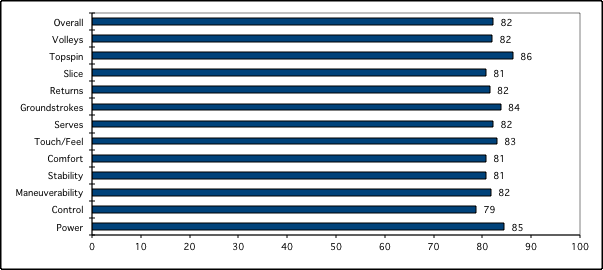



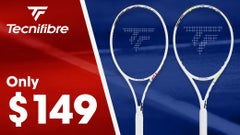


Likes
Brittany - "I liked the easy power, spin and depth. The feel was also great!"
Jason - "Lots of power and spin! It was easy to hit with consistent depth from all areas of the court. It has a softer and more muted feel thanks to Countervail."
Tiffani - "I was surprised how much I liked hitting with a Spin Effect racquet. There was plenty of power and spin."
Mark - "I liked the Burn 100S Countervail, and I feel that it is a solid refinement over the prior model. It has plenty of power with minimal vibration. The matte carbon/ bright orange color scheme is attractive, simple, and easy to identify as well."
Dislikes
Brittany - "The launch angle and string pattern take a little time to get used to."
Jason - "Deceptively comfortable. I'd still prefer a lower stiffness rating. It'll launch the ball if you're not careful."
Tiffani - "It wasn't noticeable during play, but after using the Burn 100S Countervail for the month-long playtest I noticed my wrist was sore. The Countervail technology masked the frame's stiffness."
Mark - "I went from playing with the Steam 99S, which has an extremely open string pattern, to racquets with a more traditional number of strings and spacing. I have since become accustomed to how the ball feels on a tighter stringbed, and I had a hard time adjusting to the exit angle of the ball with the Burn 100S Countervail."
Comparing the racquet to others they've tried, our testers said:
Brittany - "The Burn 100S Countervail is vastly improved over the previous version. The most noticeable difference is the feel. The first version was stiff and uncomfortable at times. This update is more arm friendly and less stiff. I also thought there was less spin potential, which worked for me. I didn't feel like I had to alter my game as much to fit the racquet. I would even go out on a limb and say that this a completely different racquet from the previous version."
Jason - "The Burn 100S Countervail plays very similarly to the previous Burn 100S, but it's slightly easier to swing. There's a definite improvement in feel."
Tiffani - "I reviewed this racquet and the standard Burn 100 Countervail at the same time. These racquets felt pretty interchangeable, with some slight differences. The Spin version offered more power and spin, and a bit more stability. The standard version felt easier to control. The Burn 100S Countervail also reminded me of the Wilson Ultra 100. Both the control and the feel are better in the Burn 100S Countervail than in the previous Burn 100S."
Mark - "The Burn 100S Countervail is definitely a relevant addition to the very competitive, modern player's frame category. There are not too many 11.5 oz racquets with an elliptical beam shape. The Wilson Burn FST 99, the Volkl V-Sense 8 (315), the Yonex VCORE SV 98 and the Dunlop Precision 100 Tour are the closest. If you drop approximately 0.2 oz. off the weight comparison then you can include all the usual suspects: the Babolat Pure Drive, the Pure Aero, the Wilson Burn 100 and the Head Graphene XT Extreme MP A."